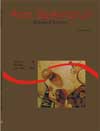<b>Development of Pacific white shrimp, Litopenaeus vannamei (Boone, 1931) fed on differents diets in intensives nurseries</b> - DOI: 10.4025/actascibiolsci.v31i1.454
Abstract
The objective of this work was to evaluate differents diets in development of L. vannamei post-larvae in intensive nurseries. In this experiment were used 264,000 PL10 with initial weight and length of 11.0 mg and 9.78 mm, respectively, distributed in 12 nurseries of 1,000 L, cultured during 10 days. Four treatments were tested (control – CR40-ART, CR42:48¬-ART, CR42:48:52 and ART) which were composed of 4 artificial and 1 natural diets, with 3 repetitions, distributed in an entirely casualized experimental delineation. Post-larvae were fed in the proportion of 15 % of total biomass. The best survival rates were verified in the treatments CR42:48:52, CR42:48-ART, ART and CR40-ART, with 91.3; 90.5; 81.8 e 70.9% (P>0.05), respectively. The best development occurred in the shrimp of CR42:48:52 treatments, confirmed by Tukey Test (P<0.05), to final length and weight, weight and length gain, food conversion and increments, in comparison to individuals of ART treatments. That refers to biomass gain and final biomass the CR42:48:52 treatment differed of CR40-ART e ART (P<0.05) treatments. We concluded that utilization of different products with high nutritional value provided to post-larvae high zootechnical indexes, producing shrimp of excellent quality to stocking ponds endings.Downloads
Download data is not yet available.
Published
2009-04-14
How to Cite
Lourenço, J. A., Santos, C. H. dos A. dos, Braga Neto, F. H. F., Arena, M. L., & Igarashi, M. A. (2009). <b>Development of Pacific white shrimp, Litopenaeus vannamei (Boone, 1931) fed on differents diets in intensives nurseries</b> - DOI: 10.4025/actascibiolsci.v31i1.454. Acta Scientiarum. Biological Sciences, 31(1), 1-7. https://doi.org/10.4025/actascibiolsci.v31i1.454
Issue
Section
Aquiculture and Fisheries Resources
DECLARATION OF ORIGINALITY AND COPYRIGHTS
I Declare that current article is original and has not been submitted for publication, in part or in whole, to any other national or international journal.
The copyrights belong exclusively to the authors. Published content is licensed under Creative Commons Attribution 4.0 (CC BY 4.0) guidelines, which allows sharing (copy and distribution of the material in any medium or format) and adaptation (remix, transform, and build upon the material) for any purpose, even commercially, under the terms of attribution.
Read this link for further information on how to use CC BY 4.0 properly.
0.6
2019CiteScore
31st percentile
Powered by 

0.6
2019CiteScore
31st percentile
Powered by 











1.png)




3.png)













